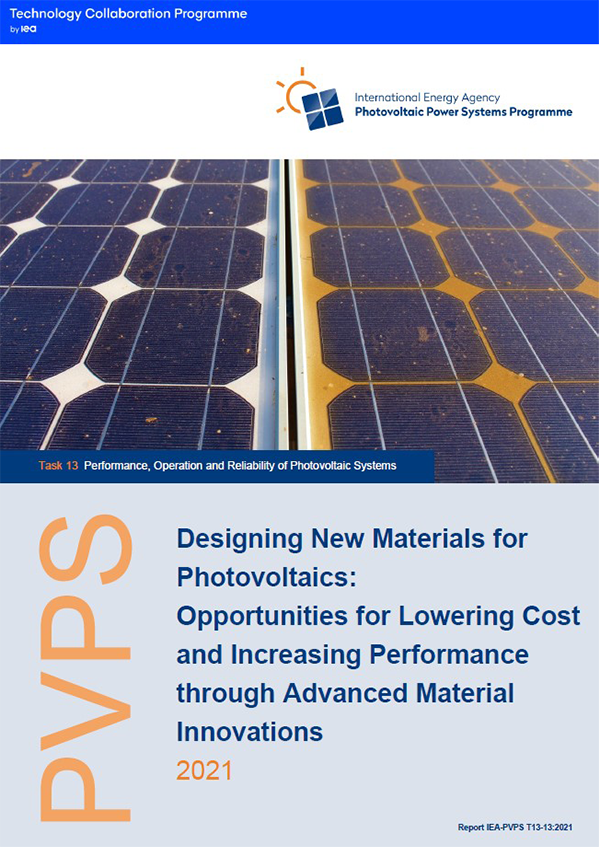
Sandia researcher Joshua S. Stein co-led work resulting in two recent reports that aim to advance the development of photovoltaics.
The International Energy Agency Photovoltaic Power Systems Programme (PVPS) reports focused on bifacial modules and systems and the design of new photovoltaic materials.
The reports, which were released this spring, act as technical references on the state of the photovoltaics field and address the issues that are important to industry stakeholders, Joshua said.
“The bifacial report is the culmination of several years of work with an outstanding group of researchers from around the world,” Joshua said.
Joshua is a member of the agency program’s group that focuses on photovoltaics performance and reliability and aims to “provide support to market actors working to improve the operation, the reliability and the quality of PV components and systems,” according to the International Energy Agency.
Two-sided photovoltaic systems popular
“Bifacial Photovoltaic Modules and Systems: Experience and Results from International Research and Pilot Applications,” examines the growing popularity of bifacial photovoltaic cells, modules and systems.
Recently, bifacial photovoltaics on single-axis trackers have become the solar technology with the lowest levelized cost of energy in most parts of the world. New cell designs have replaced opaque, monolithic back surface foil contacts and allow light to reach the cell from the rear, resulting in bifacial solar cells with rear side efficiencies from more than 60% to 90% of the front side. These cells now come in several varieties and many manufacturing lines have converted to producing bifacial cells.
The study considered newly discovered degradation issues specific to bifacial cells due to such causes as light and elevated temperatures, and rear side potential induced degradation, as well as new optimized bifacial systems and models.
For example, the study evaluated the state of the art of bifacial PV performance models. Researchers defined four hypothetical system designs and two designs based on field measurements.
Then, necessary input parameters and weather files were provided to volunteers from 13 different research and commercial entities, each with their own bifacial PV performance model. The report described each model in detail, with a range of results, with some models unable to simulate all the scenarios. The predicted gains for some of the different bifacial systems were as great as double, which showed the value of defining standard test cases to verify and validate the models.
The last section of this report provides a summary of 11 bifacial field test sites around the world, along with examples of field results. Many of these sites include a variety of bifacial test arrays with different orientations, designs and site conditions.
Joshua and Christian Reise of Fraunhofer ISE in Freiburg, Germany, were the report’s lead co-authors. In total, 49 international scientists contributed to the publication, including Sandia researchers Cameron Stark and Dan Riley.
Examining the growing market for photovoltaics
The second study, “Designing New Materials for Photovoltaics: Opportunities for Lowering Cost and Increasing Performance through Advanced Material Innovations,” examines the rapidly growing photovoltaic market, including the dramatic drop in module prices.
“There is concern in the PV industry that falling module prices may result in lower quality and reliability issues,” said Joshua. “This report helps stakeholders better understand the opportunities for higher performance and lower cost that new materials can offer, and also reviews current efforts to ensure long module lifetimes.”
The report provides a global survey from agency member countries of efforts to design new materials for photovoltaic cell and module applications. Researchers organized the report by module component and included reviews of material innovations in front-sheets, encapsulants, backsheets, cell metallization and cell interconnects. Included are sections on the state of the art in photovoltaic module materials, the functional requirements of each component and materials typically used to meet the requirements; motivations for applying new material solutions to PV modules; and a global survey of novel material solutions under development and testing for the next generation of modules.
Joshua was second author of the report, after Gernot Oreski of the Polymer Competence Center Leoben in Austria. A total of 24 researchers and scientists from around the world contributed.
More information is available at the PV Performance and Modeling Collaborative about the IEA Photovoltaic Power Systems Programme’s TASK 13 reports, and more is also available about the International Energy Agency programs.
Sandia also is co-sponsoring the 15th Photovoltaic Performance Modeling Collaborative Workshop in Salt Lake City, Utah, from Oct. 19-20. Also sponsored by CFV Labs and GroundWork Renewables, the workshop will examine technical challenges and opportunities of photovoltaic systems.